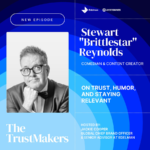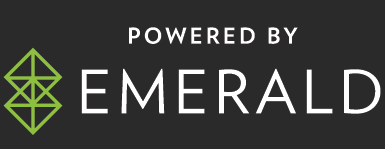By Deema Tamimi, VP of Marketing, Creatopy
Advertising has always evolved with technology. But right now, the pace of change is exposing cracks in a system that’s long overdue for an overhaul. The traditional agency model, once the go-to for brand-building and campaign execution, is increasingly unfit for how marketing actually happens today.
Rigid processes, fragmented workflows and challenges adapting quickly to digital demands mean many agencies are struggling. Meanwhile, the needs of brands and marketing teams have shifted. Speed, integration and performance are non-negotiable. Too often, legacy structures simply can’t deliver consistently.
Modern marketing is overloaded and agencies are increasingly unable to reduce the burden. There are now tools for every stage of the campaign lifecycle: strategy, research, creative, launch, optimization and reporting. None of them talk to each other particularly well. Agencies, instead of simplifying the picture, often end up adding another layer of complexity.
That’s because many still operate in silos. A creative agency handles messaging. A media agency sets up campaigns. A data agency pulls performance reports. The result is a chain of handovers, each generates its own approval processes and communication gaps. For in-house teams trying to move quickly, it’s like dragging a parachute.
A broken flywheel
The advertising process today can be described as a flywheel with too many broken spokes. You start with inspiration – moodboards, trend research, competitive analysis – then comes the creative i.e. assets, messaging and concepts. Following that is the campaign build and launch. Then performance tracking, analysis and reporting.
At each stage, there’s a separate platform, a different team and a new login. Often, creative teams have little visibility of what’s actually performing. Analysts don’t routinely speak to copywriters and media buyers can’t feed back into concept development. The cycle should be continuous and self-improving but, in practice, it’s clunky and disjointed.
This is where traditional agencies are hitting a wall. Most only touch one part of that flywheel. And when everything’s fragmented, marketers end up playing project manager – connecting the dots, translating insights, chasing updates and re-briefing creatives.
What’s working instead
Some newer players are approaching things differently. Rather than specializing in just one area, they’re focused on solving for the whole process. That means building or integrating tools across all stages of the campaign lifecycle – ideation, creation, launch and measurement – and designing systems that let those stages inform each other.
AI is playing a big role in making that possible and helping to simplify workflows and speed up delivery. Used well, it can streamline campaign set-up, help tailor creative for specific audiences and turn performance data into immediate actions. The most effective platforms aren’t trying to replace marketers – they’re helping them do better work, faster.
There’s also a move towards AI tools trained specifically on advertising problems, rather than trying to make generic AI fit marketing needs. That shift, from toolkits to purpose-built systems, is what’s making these new models genuinely useful. Marketers don’t want, or need, more features. They want less noise, more clarity and outcomes that match their goals.
Where it’s going
The pressure on agencies isn’t just coming from clients. It’s structural. When internal marketing teams have access to platforms that can concept, launch and optimize campaigns in real time, the question becomes: what value is the agency adding?
That doesn’t mean agencies are obsolete. But it does mean the ones that survive will look very different. They’ll be embedded, flexible and tech-native. They’ll work across the full flywheel, not just one slice of it. And they’ll be judged on performance, not just output.
The old model, set piece campaigns, quarterly presentations and disconnected insights, is being replaced by something faster, leaner and more iterative. Agencies that can match the pace will be those that understand what marketing actually looks like today and are built to support it.











